Chardonnay
What's in a name?
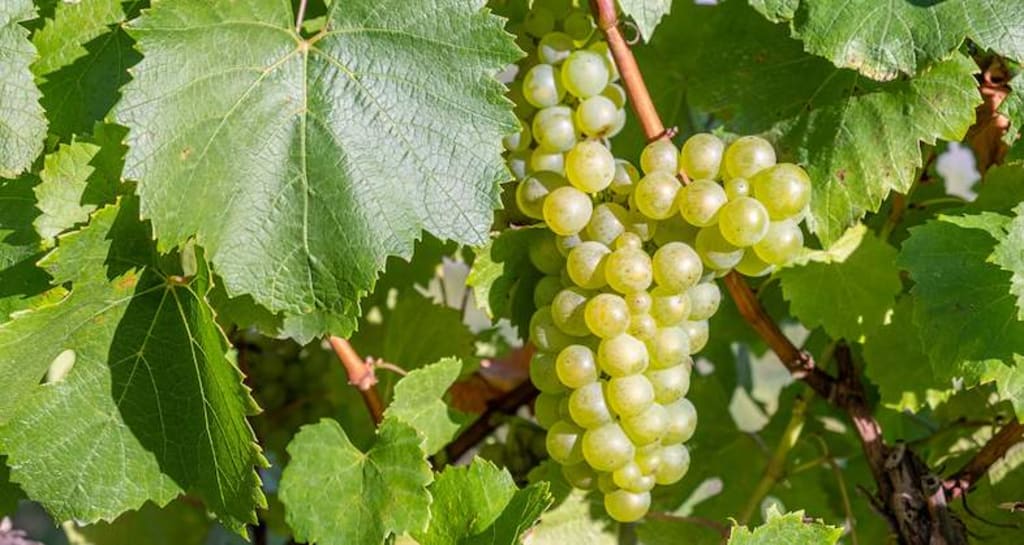
Grapple with a lil grape amidst the thistle. Peas in a pod not far from the backyard pepper-patches, prickly pompoms along the side-paths of a city park. This vivid color is a good omen if untouched, fertility is their needled warning.
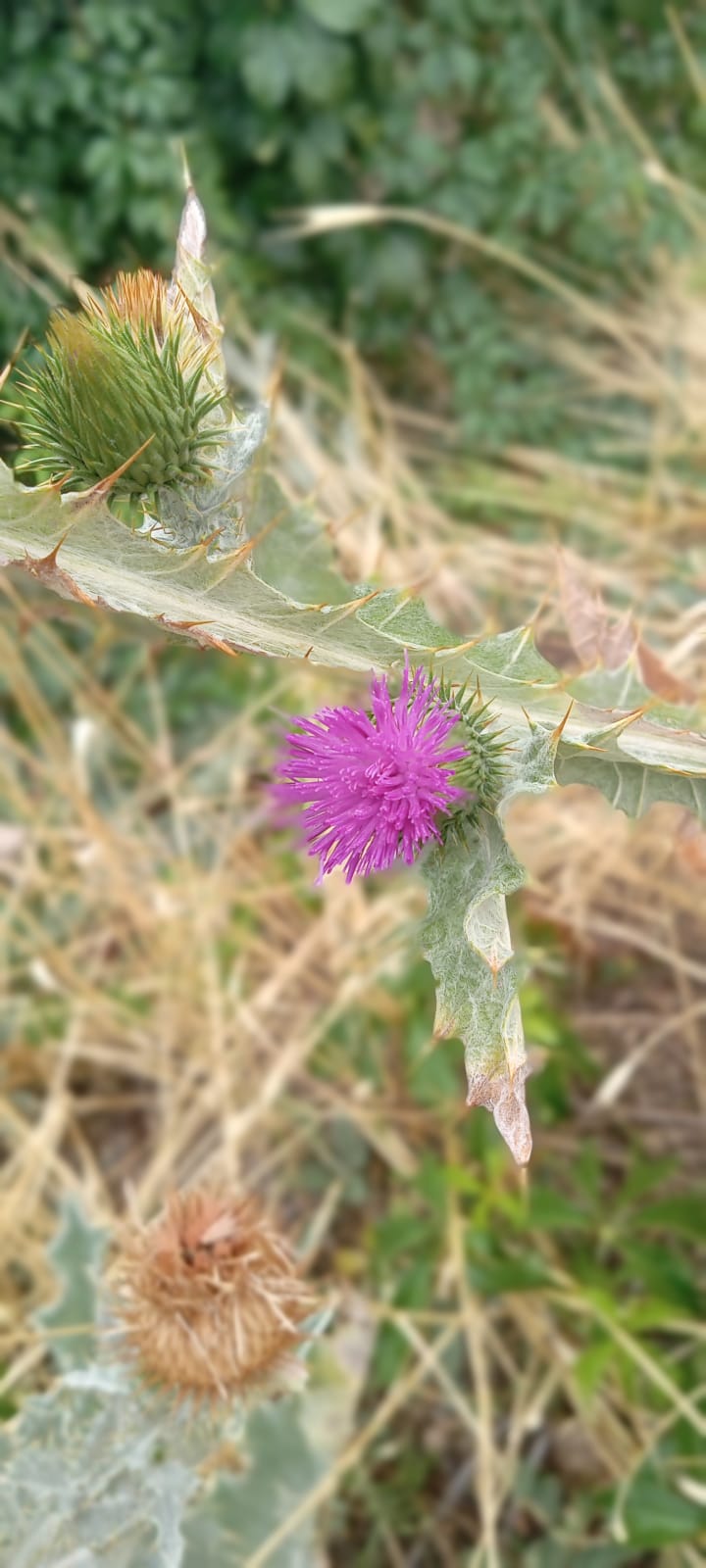
Out for a walk, and I can't help but think of chardonnay when I see a common thistle plant of whatever size. What the hell.

If you grab it foolhardily, it will sting you, though not in the way of nettle, bearing no venom or irritant. It's a thick crunchy weed with a bite. Many species are edible if you can get at it. Do not touch without protection, no matter how purplish and feathery soft the flowerlets fixate you. A beautifully sobering experience.
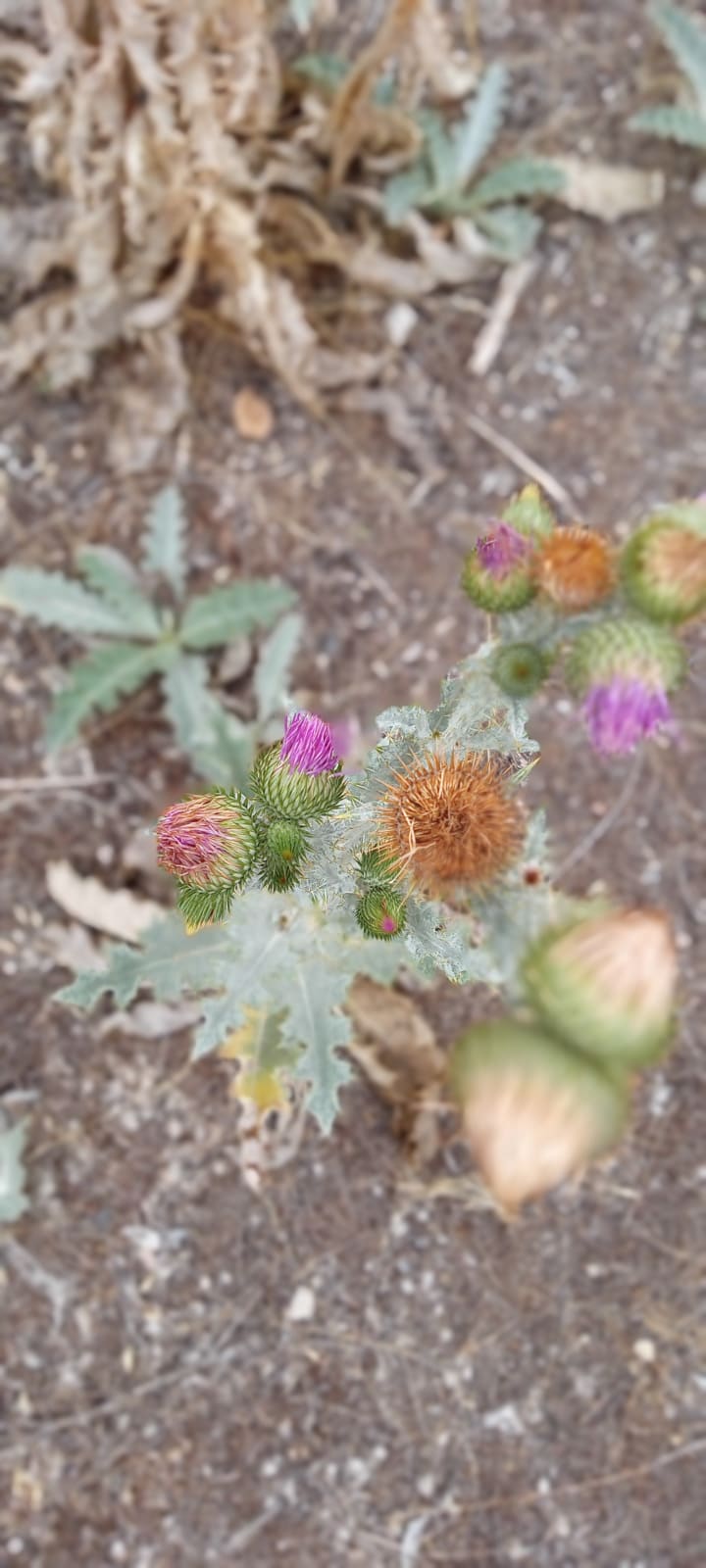
The French word for thistle is chardon. This variety of grape originated in Burgundy, France; legend says it was cultivated there by the Gauls and the Romans, and to this day it is the only white wine grape permitted by law to be planted as Bourgogne Blanc.
The Roman word for thistle was carduus, which is now part of its scientific name. Old wisdom about viticulture says that those places where thistle grows in profusion and remains green through the summer are good places for grape-vines. They are known to often share the same ecosystem.
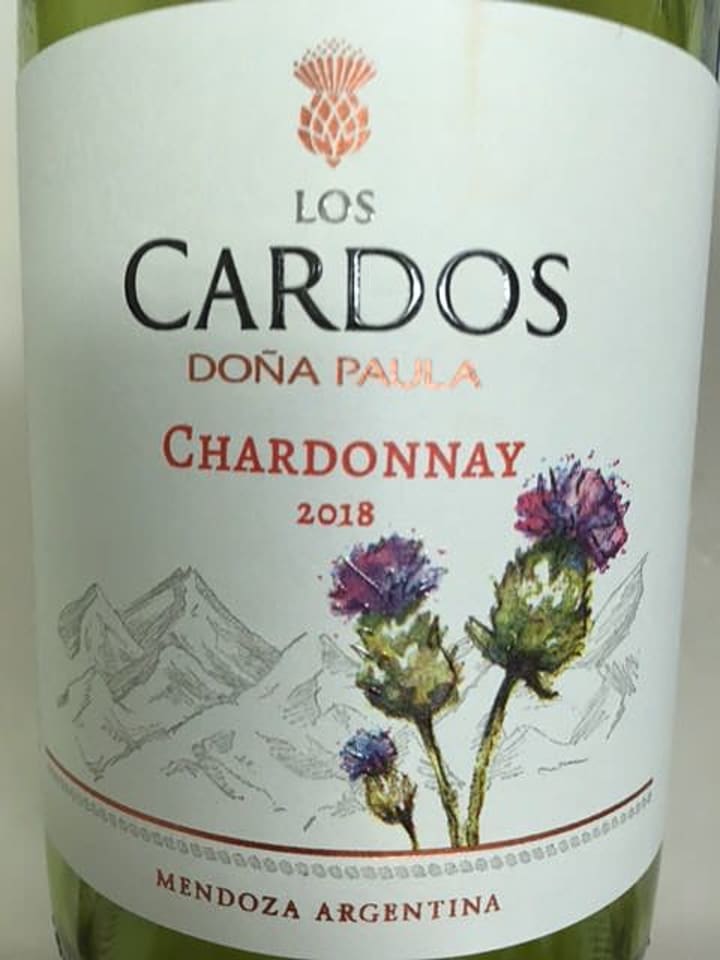
"The thistle (from Spanish: "cardo") is a flower of amazing colors and an incomparable beauty, also the unequivocal symbol of the presence of a good terroir. These wines are elaborated with 100% grapes coming from our own vineyards - located at more than 1,000 meters above sea level at the foot of the Andes. They are fresh and very fruity wines."
Vineyard's Website: donapaula.com/wines/
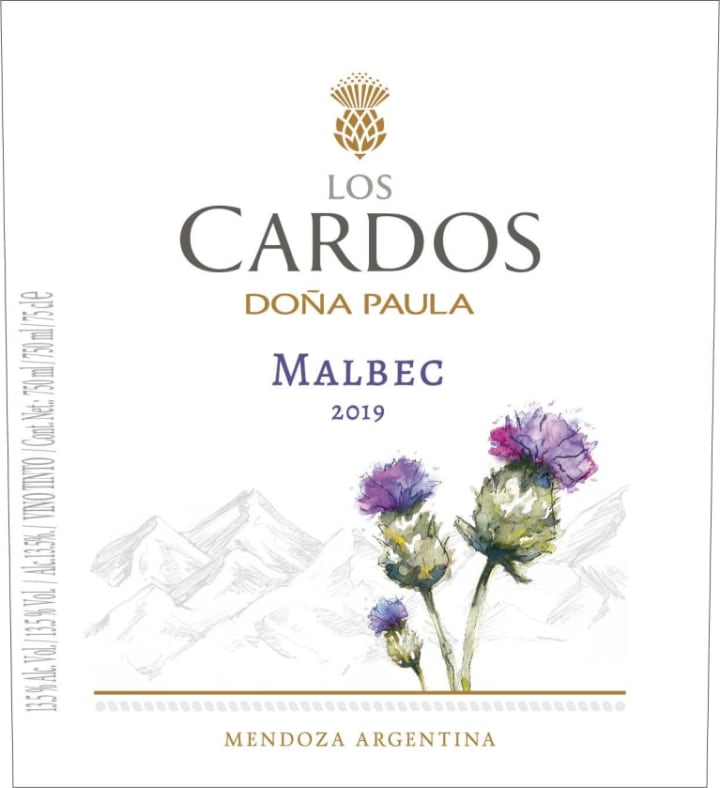
The thistle and wine-grape (vitis vinifera) out-planting the table-grape (vitis labrusca); are all three cherished invasive species and creepy creepers apt to escape in great festoons from suburban backyards and grillzones. Invading the city park with its welcome lushful green.
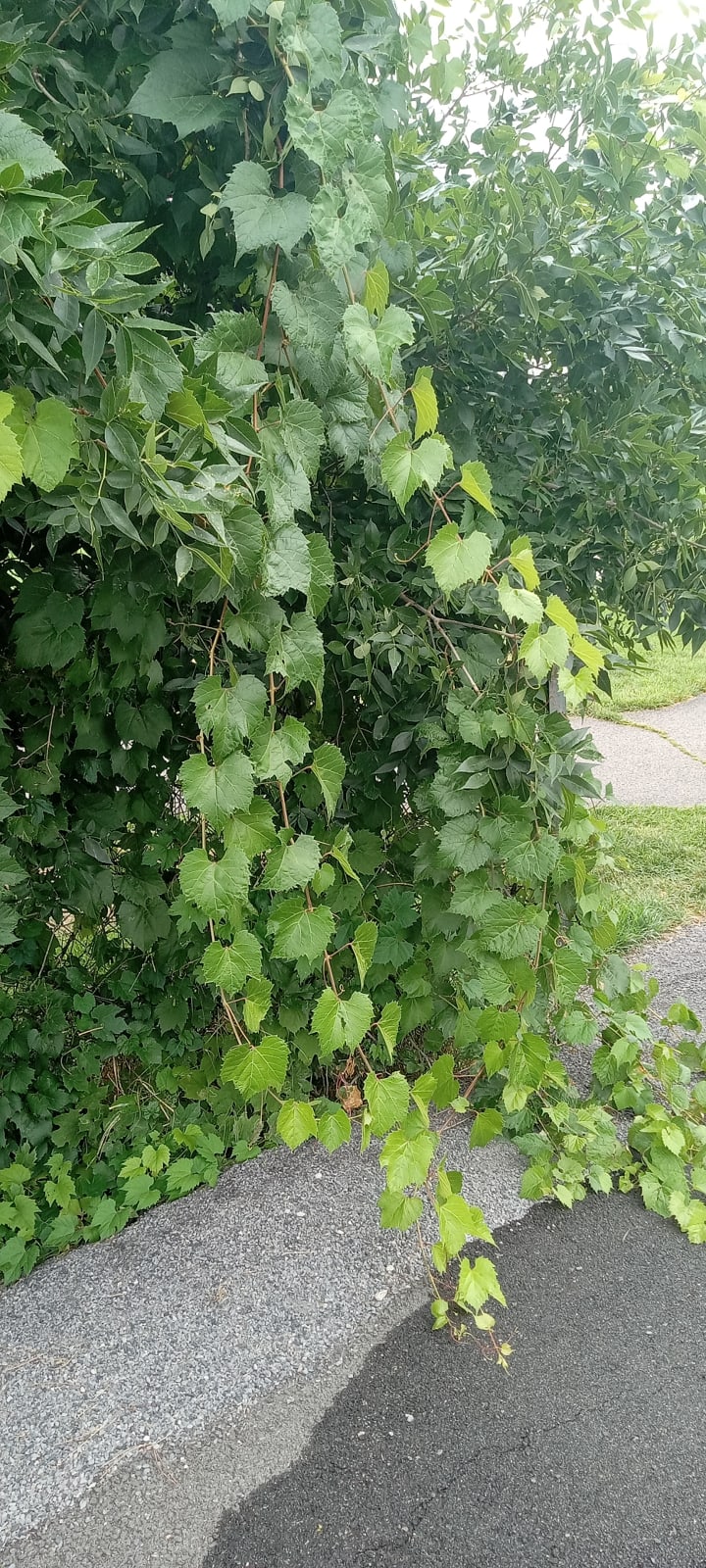
They have inter-twined their root-stock and traveling brachlets bearing leaves for wrapping dolma, limber as whips, into the structure of the box-elder trees of the city park spaces.
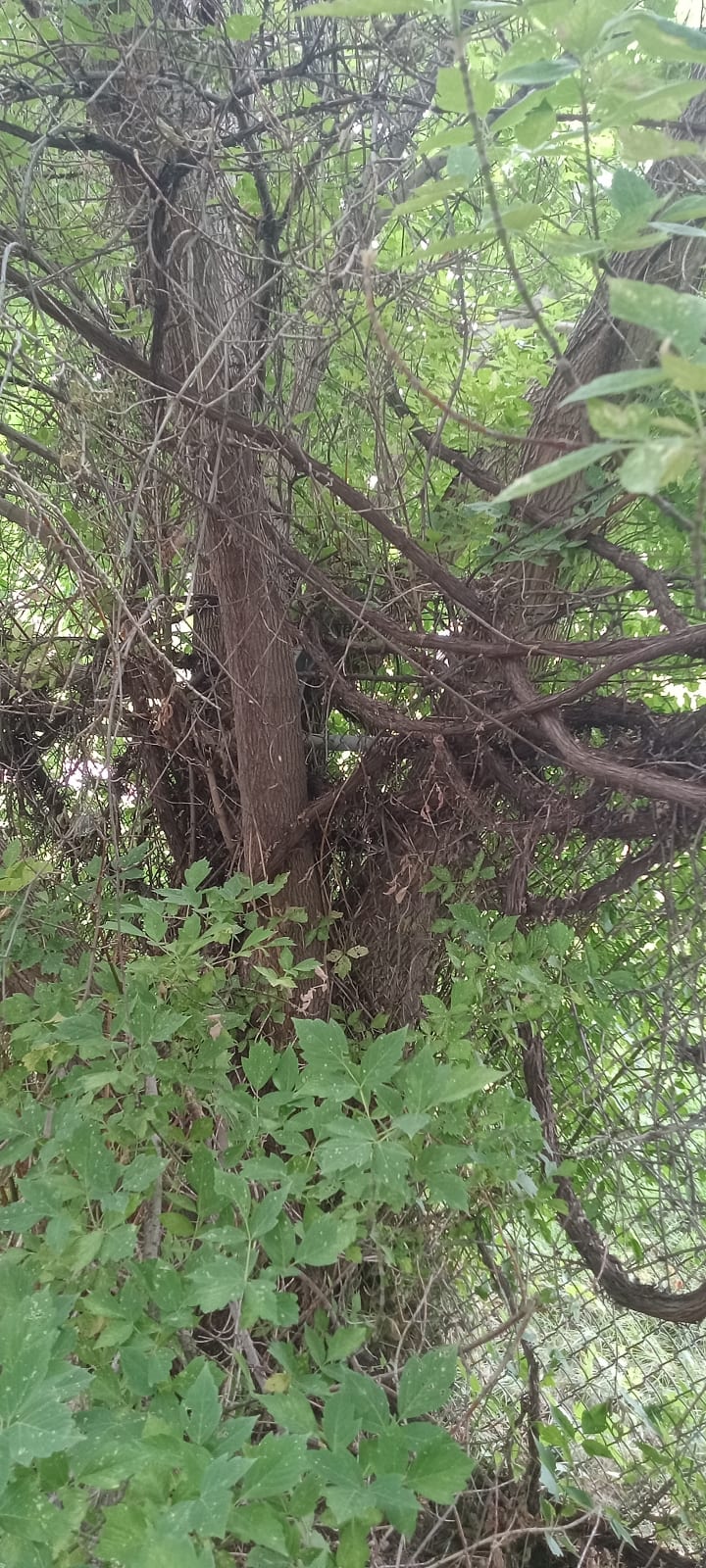
Parasitic. Paradise is a garden enclosed, even more delicate in the light rain. Fostering the creepy creepers and a greener thistle showing off its violet pompoms. Just a few paces away from these gnarly vines.
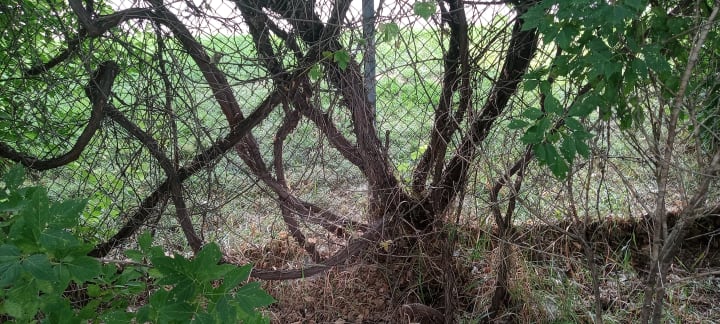
They say that Bacchus, god of wine, must be dismembered in order to be reborn each season. The reason?
'Cause otherwise you get scraggly proto-grapes like these,
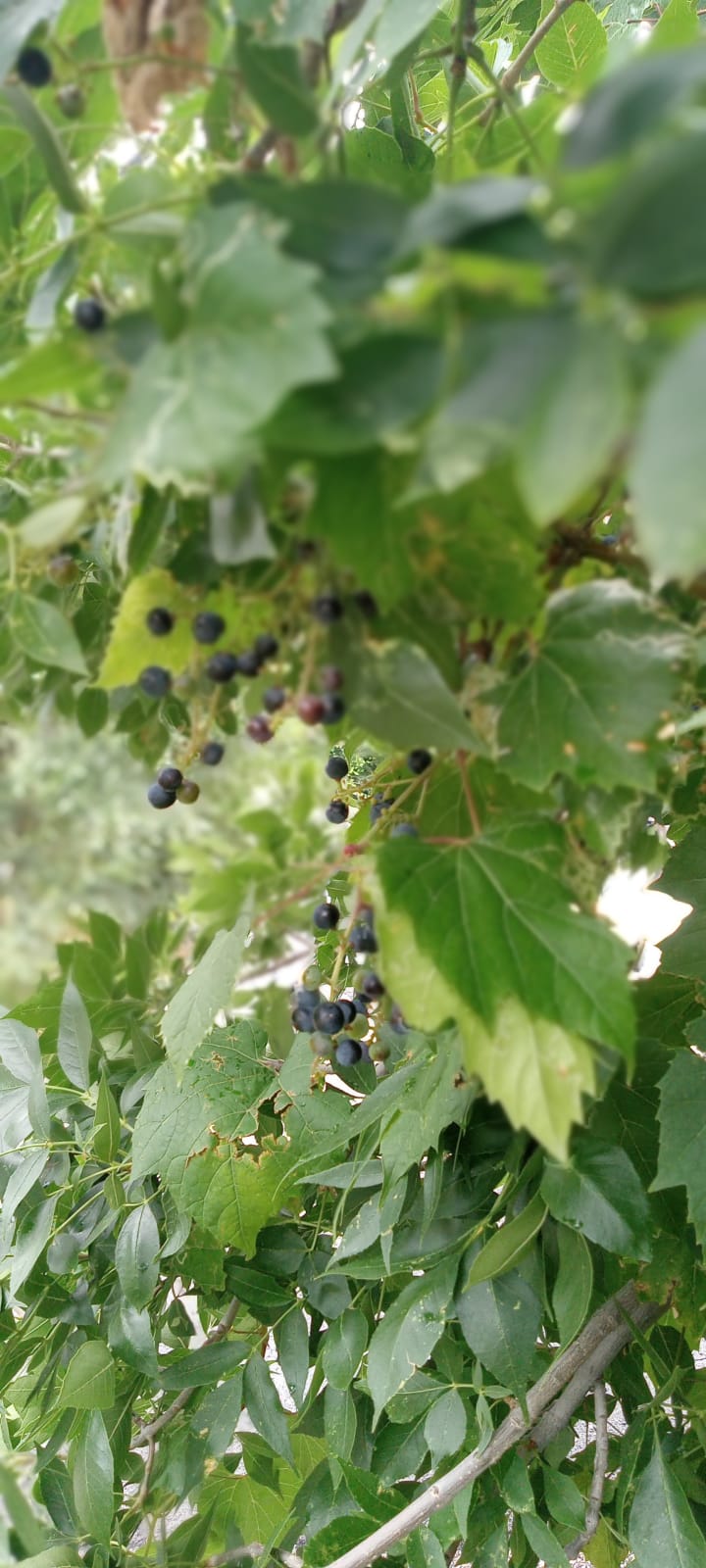
He must be cut down to stubs via wisdom of age-old principles of viticulture, knowing that when he is cut limb from limb, never crying out once, the ligneous stumps weep a pearly goo that resembles fresh semen.
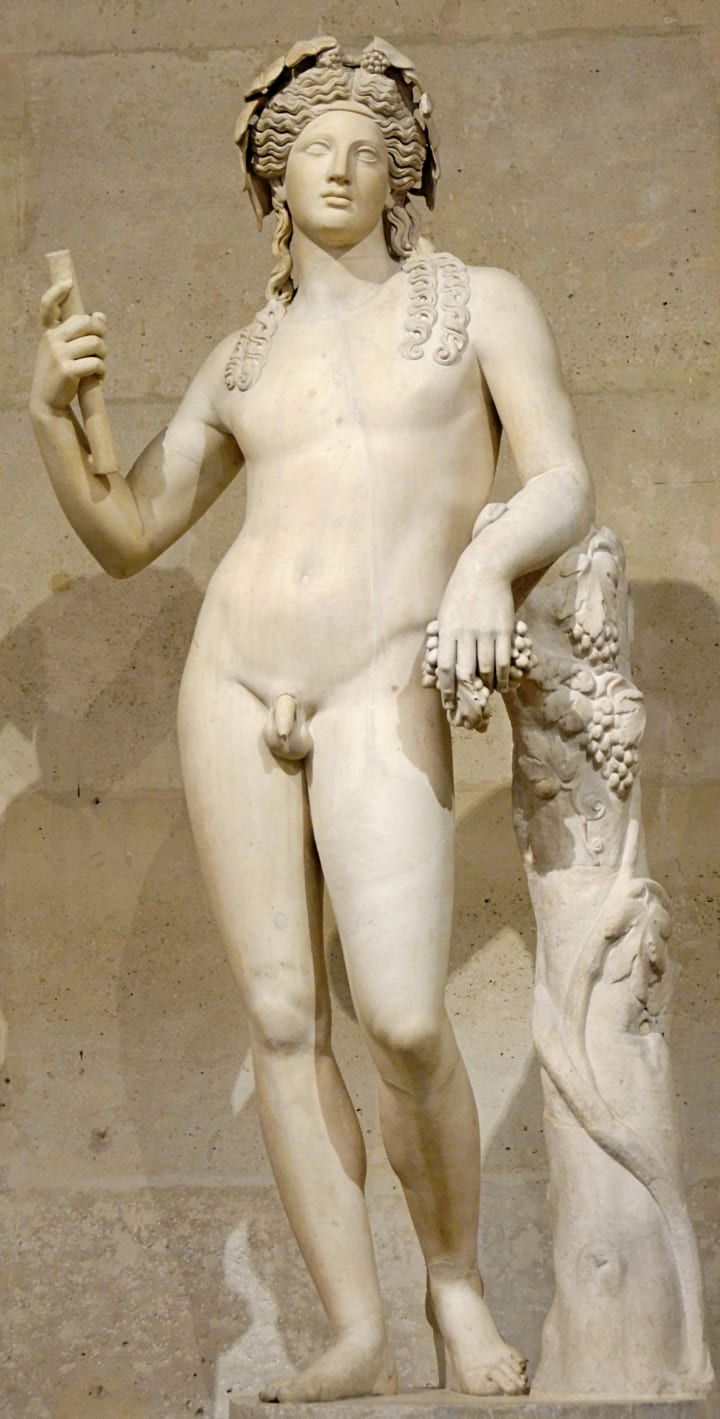
Pruning is necessary, for grapes in vine-land that grow plumper and more concentrated in flavor, fit for the chemistry of fermentation and reserved for future consumption on special occasions. If its vines are trimmed and its fruit-yield curbed. It will sprout fresh from the wood, year after year.

All wines, then, could rightly be called Chardonnay, sharing such intimate vows with the thistle-plant. Where it kept its green, they knew it was a sign they could find that ancient vine first sought for its fruit, wild, by sweet-and-sour mouthfuls.
Little berry among the prehistoric spike-plants, sign of bounty/
Before the secrets of bread and the biology of fermentation were first harnessed for human ends.
Yet, this root-stock will grow into us,
Persistent as a dandelion, symbiotic pest
Disrupting the structure of the sidewalks.
Once found only in Burgundy,
Chardonnay has taken over the world,
And is grown in all places where vitis vinifera
Can grow
Along with the ivy and the elms
Which cling for dear life to the sewer lines, cracking
Them, leaving room through the rift for more and more root,
Encircling our garden enclosed.
And of course this is the thistle's prick. These are
Grapes gone wild, intrusive, penetrative
Parasites of Paradise which would cling
To our very skyscrapers, providing
Berries to eat
Buried in the prickle where
That lil grape among the thistles belies its
own tribute: whom we [aptly] name
CHARDONNAY
About the Creator
Rob Angeli
sunt lacrimae rerum et mentem mortalia tangunt
There are tears of things, and mortal objects touch the mind.
-Virgil Aeneid I.462
Reader insights
Outstanding
Excellent work. Looking forward to reading more!
Top insight
Expert insights and opinions
Arguments were carefully researched and presented







Comments (19)
Excellent piece that I missed
Well, 11 days passed, and I am now back. Would you believe me if said I wasn't lying? Lol. Life lifed. I'm sorry. I love this fine specimen of a braided essay! From etymology to wine history, I learned quite a lot along your walk. That poem at the end is fantastic, btw. It bookends the piece quite well. Never have I ventured far into the realm of wine (a taste here and there, but I cannot say I know what chardonnay really tastes like, haha.) This was an excellent read regardless of my experience. I love the innuendoes you snuck in (that Bacchus bit into the pruning bit was just hilarious!) and seeing all the pictures was so informative -- really added a lot to the knowledge you gave. Wondering now where you live that you can recognize the plant everywhere! As with all your pieces, I thoroughly enjoyed myself. Given your job, I know you know so much more about alcohol than just chardonnay, and would love to read all about it! Cheers, my friend.
🥂 I returned to your lovely Chardonnay... had read and enjoyed without time for comment. Today, I grabbed a glass of wine and toasted You! I snapped a screenshot of one of your lovely pictures, but promise not to share it without your permission. I so appreciate You. 🥂
This was a wonderful, clever, layered, informative, poetic, little bit naughty piece, and I am here for it! Great read! Thank you, Rob. Who knew thistles and chardonnay could be so interesting?
Insightful
This comment has been deleted
The pics did amplify your message. It's such a good piece of writing.
This was an eye opening and very well written article! I passed it onto to an amateur wine buff I know and she was very impressed.
Interesting and informative!!! Congratulations on Top Story!!!💕❤️❤️
Chardonnay and sauv blanc are the only two white wines I care for (I'm a red guy). The dryer the better. I love all of the information you packed into this excellent article. Congrats on your Top Story!
Great well deserved Top Story. I don't drink alcohol but this taught me quite a bit about wine
Thus is fascinating and quite informative. Congrats on the TS.
So glad this got Top Story!! I’ll be back with more comments on this incredibly interesting piece. I wanna do it justice 😊💕.
quite informative article congratulations on top story!
I really enjoyed this morning walk. I remember the first time I grabbed that thistle/nettle thing without glove, still remember the ouch. Amazing the myths and stories behind the names we use everyday. This was informative and now I want wine.
Oooo, this was so fascinating! I learned a lot of new things today! I enjoyed reading this!
This was wonderful. Very informative and fun to read.
Splendid work. I appreciated the invasive species aspect of the vines and learning about thistles. fyi I was just away from home and when I returned pulled out a 5 foot thistle from my rhubarb patch. It hid very well until it blossomed. I now feel sad that I did not use it for thistle soup! Also, one thing I have discovered over the years .... I have an enormous grape vine, over 50 years old - made of cuttings and with some new vines -- I choose not to cut it so that it becomes is a privacy wall -- I give it blood and bone meal every year and it provides me with juicy sweet grapes. It gives new meaning to drinking blood wine. A bit gross when I think of it -- but most years the grapes just feed the squirrels, chipmunks, skunks, racoons and bunnies that visit and they do not complain.
As always I learn so much from your stories! I did not expect the shift to a poem at the end but it was, as always, masterfully done! The way you weave pictures into your stories is an inspiration
Wow! I've learned so much from this piece. In times of famine, the Soviet people had to survive on thistle soup. It saved many lives.